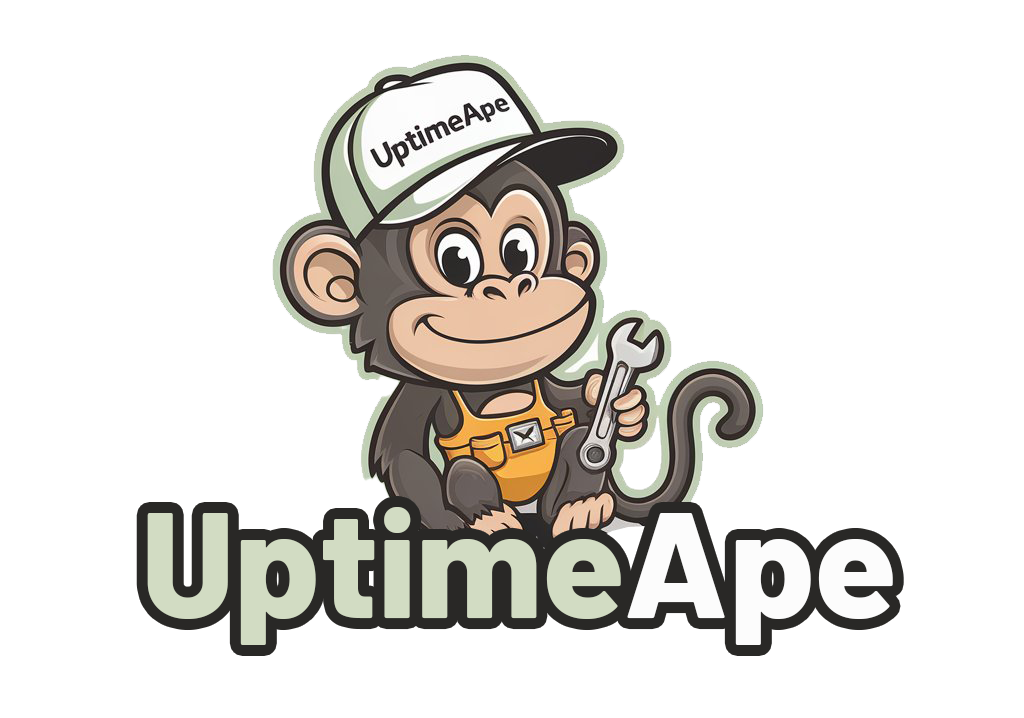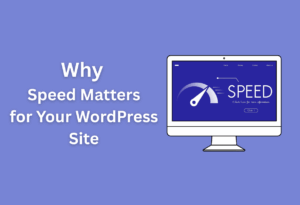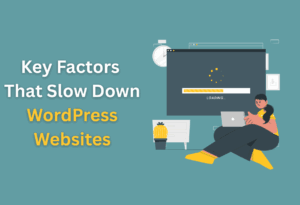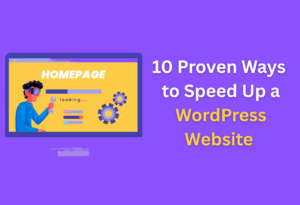Over time, your WordPress website’s performance can significantly impact user experience and search engine rankings. In this guide, you will learn how to effectively measure your site’s speed using a variety of recommended tools. By understanding your website’s speed metrics, you can identify areas for improvement and optimize loading times, ensuring your visitors enjoy a seamless experience. Let’s probe the steps and tools you need to get started on enhancing your website’s speed.
Understanding Website Speed
While building your WordPress website, it’s imperative to grasp the significance of website speed. A fast-loading site not only enhances user experience but also contributes to better search engine rankings. If users abandon a slow site, it can lead to reduced conversions and increased bounce rates, impacting your overall online presence.
Importance of Website Speed
With a keen understanding of website speed, you start to realize how it affects first impressions. A speedy website engages users, encourages them to explore your content, and boosts overall satisfaction. If your pages load slowly, visitors are less likely to return in the future.
Factors Affecting Website Speed
Any number of variables can influence how fast your website loads. The website speed can be impacted by various factors, including:
- Quality of web hosting
- Size and optimization of images
- Number of HTTP requests
- Use of caching
- Plugins and scripts
Knowing these factors allows you to make informed decisions to optimize your website’s performance.
Speed can be further affected by aspects such as server response time, the website’s code quality, and the overall design complexity. Understanding these components will aid in your optimization efforts. Here are some additional important elements:
- Content Delivery Network (CDN) usage
- Browser caching settings
- Third-party scripts
- Mobile responsiveness
Knowing how these aspects interact can significantly enhance your website’s loading times, leading to improved user engagement.
How to Measure Website Speed
All website owners understand the importance of speed when it comes to user experience and SEO. Measuring the speed of your WordPress website not only helps identify issues but also enables you to implement necessary optimizations. By using the right tools, you can assess your site’s performance and make informed decisions for improvement.
Tools for Measuring Speed
Little effort is required to measure your website’s speed with the plethora of available tools. Several options exist such as GTmetrix, Pingdom, and Google PageSpeed Insights. Each tool provides unique insights, including load times, recommended optimizations, and more, helping you pinpoint areas that need attention to enhance user experience.
Interpreting Speed Measurement Results
Speed tests yield various metrics that can be confusing at first. Speed is typically indicated by load time, but metrics like First Contentful Paint (FCP), Time to Interactive (TTI), and Speed Index also play significant roles. These measurements provide a comprehensive view of your site’s performance, highlighting not only how fast your pages load but how effectively they engage users right from the start.
Lighthouse, Google’s automated tool, offers a wealth of information about your site’s performance. It generates detailed reports that help you understand specific factors influencing your website’s speed. With this data at your fingertips, you can prioritize which areas to improve first, leading to a faster, more efficient WordPress site that keeps your visitors engaged and coming back for more.
Tips for Improving Website Speed
Unlike many assumptions, improving website speed is achievable without extensive technical expertise. By implementing some key strategies, you can significantly enhance your site’s performance. Here are several recommendations to help you get started:
- Optimize Images
- Enable Browser Caching
- Minimize HTTP Requests
- Use Asynchronous Loading
- Remove Unused Plugins
This will lead to a smoother user experience and improved SEO rankings.
Optimize Images
Any successful website uses images effectively, but large file sizes can slow down your site. You should compress images using tools like Smush or ShortPixel, ensuring they don’t lose quality while loading efficiently on your web pages.
Enable Browser Caching
On enabling browser caching, you allow users’ browsers to store certain elements of your site for future visits. This reduces server load and loading times for repeat visitors, ensuring your pages load faster upon their next visit.
It’s beneficial to set an expiration date for cached files, which can range from a few days to months, depending on how often you update your content. This way, visitors can load old resources quickly without fully reloading the page each time.
Minimize HTTP Requests
One effective method to improve your website speed is to minimize HTTP requests. This can be accomplished by reducing the number of elements on your pages, such as scripts, images, and stylesheets that require separate requests to the server.
Minifying and combining CSS and JavaScript files can significantly cut down on these requests, which equates to faster load times. The fewer files your web server has to fetch, the quicker your pages will load for your users.
Use Asynchronous Loading
Speed can also be improved by using asynchronous loading for JavaScript files. This allows your webpage to load other elements while waiting for these scripts to be fetched, preventing delays in rendering content visible to the user.
Understanding when and where to use this functionality can greatly enhance your page load speeds and provide a better user experience by allowing necessary content to load first without being hindered by larger scripts.
Remove Unused Plugins
The more plugins you have, the more potential there is for your website to slow down. Unused or poorly optimized plugins can add unnecessary load time to your pages, affecting overall speed.
Caching unused plugins can help you boost your site’s performance, but it’s best to evaluate your active plugins regularly. Deactivate and delete those not in use, ensuring your website runs smoothly without extra bloat impacting speed.
Caching solutions, cleaner code, and consistent monitoring can virtually guarantee your website performs at its best, giving users a more engaging online experience.
Advanced Techniques for Speed Optimization
Now that you understand the basics of website speed, let’s probe into more advanced techniques for optimizing your WordPress site. These strategies can significantly enhance your loading times and improve overall performance.
- Implementing Lazy Loading
- Database Optimization
- Utilizing Gzip Compression
- Critical CSS Optimization
- Choosing the Right Hosting Plan
| Technique | Description |
|---|---|
| Implementing Lazy Loading | Delays loading of images and videos until they are needed. |
| Database Optimization | Cleans up your database to remove overhead and reduce bloat. |
| Utilizing Gzip Compression | Compresses files on the server to reduce file size sent to browsers. |
| Critical CSS Optimization | Inlines the necessary CSS for above-the-fold content to expedite render times. |
| Choosing the Right Hosting Plan | Ensures your site has adequate resources and support for optimal performance. |
Implementing Lazy Loading
On your site, implementing lazy loading can enhance perceived performance by loading images and videos only as they come into the viewport. This means that not all media is loaded at once, which can significantly reduce initial loading times and save bandwidth.
Database Optimization
There’s no doubt that a cluttered database can slow your site down. Regular database optimization involves cleaning up old post revisions, deleting spam comments, and optimizing database tables, leading to improved performance and quicker queries.
With optimizations, you can significantly reduce the size of your WordPress database, leading to faster load times. Consider using plugins like WP-Optimize or WP-Sweep, which facilitate easy database maintenance, ensuring your site remains fast and responsive.
Utilizing Gzip Compression
Utilizing Gzip compression can decrease the size of your website’s files, allowing them to load faster for your visitors. By activating Gzip compression on your server, you can minimize the amount of data transmitted over the network, which is especially beneficial for large files like CSS and JavaScript.
It is often implemented easily through your server’s configuration or managed hosting platform. Enabling Gzip compression can decrease loading time significantly, making your site more efficient and improving user experience.
Critical CSS Optimization
Optimization of critical CSS involves identifying the imperative styles needed for rendering above-the-fold content and inlining them directly into the HTML. This minimizes the need for additional CSS requests, which can slow down page rendering.
Speed is of the essence, and by prioritizing critical CSS, your site can display content faster, leading to a more positive user experience and potentially better search engine rankings. Tools like Critical and WP Critical CSS can help you automate this process.
Choosing the Right Hosting Plan
Plan wisely when selecting a hosting provider, as the right plan can dramatically affect your website’s speed. Invest in a hosting solution that meets your website’s specific needs—look at shared, VPS, or managed WordPress hosting, depending upon your traffic and resource requirements.
Choosing a reputable provider not only ensures that you get reliable uptime but also that your server resources are optimized, which drastically affects performance. Always assess your site’s needs and choose a hosting plan that facilitates your speed optimization goals effectively.
Monitoring and Maintaining Website Speed
To ensure your WordPress website continues to perform at its best, ongoing monitoring and maintenance of speed are vital. Regularly evaluating your website’s speed can help you identify potential issues before they negatively impact user experience. By setting performance benchmarks, staying updated on best practices, and responding promptly to performance problems, you can maintain an efficient site that meets user expectations and encourages engagement.
Regular Speed Tests
To keep your website running smoothly, you should conduct regular speed tests. These tests provide you with valuable insights into your site’s loading times and overall performance. By scheduling these assessments weekly or monthly, you can track changes over time and react accordingly to any slowdown.
Setting Performance Benchmarks
Speed benchmarks allow you to establish a clear standard for your website’s performance. These benchmarks serve as a reference point for evaluating your site’s loading times across various devices and network conditions. By comparing your current performance against these benchmarks, you’ll gain valuable insights and can make informed adjustments to enhance your site’s speed.
Understanding what constitutes a good benchmark for your website depends on various factors, including your industry and target audience. Aim for loading times under three seconds for optimal user experience. By consistently measuring against these benchmarks, you can identify any trends or issues that may arise, allowing you to maintain the desired performance level effectively.
Staying Updated with Best Practices
Tests and advancements in web technology are constantly evolving, making it important for you to stay informed of best practices. This includes optimizing images, leveraging browser caching, and minimizing code. By keeping up with the latest recommendations, you can ensure that your website remains fast and competitive.
Maintaining awareness of industry trends and cutting-edge techniques empowers you to enhance your site continuously. Engage with web development communities, follow relevant blogs, and participate in forums to ensure your knowledge remains current. Implementing these practices helps you keep your website optimized and enhances user experience.
Responding to Performance Issues
Updated performance issues can arise unexpectedly, impacting user experience. When this happens, it’s vital for you to have a response plan in place. Quick identification and resolution of these issues can minimize downtime and keep your website running smoothly.
Plus, having a strategy for addressing performance problems involves routine site audits and monitoring analytics. By diagnosing issues like slow plugins, large images, or unoptimized databases, you can take action to rectify them swiftly. This proactive approach prevents small problems from escalating into more significant obstacles, ensuring that your website remains reliable for your users.
Conclusion
Summing up, measuring your WordPress website speed is imperative for enhancing user experience and optimizing performance. By utilizing tools like Google PageSpeed Insights, GTmetrix, and Pingdom, you can effectively analyze your site’s speed and identify areas for improvement. Regularly monitoring these metrics will help you make informed decisions on optimizations and ensure your site remains fast and functional, ultimately keeping your visitors engaged and satisfied.





